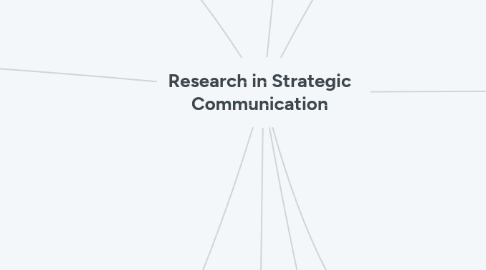
1. Human Inquiry
1.1. Purpose
1.1.1. Research
1.1.1.1. Research Methods
1.1.1.1.1. Scientific Method
1.1.1.1.2. Scientific Research
1.1.1.1.3. Types of Research
1.1.1.2. Learning
1.1.1.3. Knowing
1.1.1.4. Research Procedures
1.1.1.4.1. Select a problem
1.1.1.4.2. Review existing Research
1.1.1.4.3. Make hypothesis
1.1.1.4.4. Research design / Methodology
1.1.1.4.5. Collect data
1.1.1.4.6. Analyze/ interprete
1.1.1.4.7. Present results
1.1.1.4.8. Replicate
1.1.2. An attempt to discover Something
2. Ethical research principles
2.1. Autonomy
2.1.1. respect rights ,values,decisions
2.2. Non-maleficence
2.2.1. wrong to intentionally harm
2.3. Beneficence
2.3.1. benefit no harm
2.4. Justice
2.4.1. equality
2.5. Informed consent
2.5.1. asking for permission
2.6. Concealment
2.6.1. Withholding certain info
2.6.2. Deception
2.6.2.1. providing false info
2.6.3. Institutional review board IRB
2.6.3.1. protection of human subject
2.7. debriefing
2.7.1. explanation of the experiment
2.8. Online research
2.8.1. Passive research
2.8.1.1. social media platforms
2.8.2. Active research
2.8.2.1. surveys , focus groups
3. Sampling
3.1. selecting units form population
3.1.1. population
3.1.1.1. total set of subjects,objects,values
3.1.1.2. Census
3.1.1.2.1. examine every member of population
3.2. Sample
3.2.1. subset of population represented
3.3. Types of Errors
3.3.1. Measurement errors
3.3.1.1. difference actual value and value obtained
3.3.2. Sampling errors
3.3.2.1. data and population data differences
3.4. Generalization
3.4.1. findings and conclusions
3.5. types of samples
3.5.1. Probability sample
3.5.1.1. mathematical rule
3.5.1.1.1. equal chance of being selected
3.5.1.2. Simple random sample
3.5.1.2.1. each unit has equal chance being selected
3.5.1.3. Systematic random sample
3.5.1.3.1. picking every nth name
3.5.1.4. Quota sampling
3.5.1.4.1. meet a predetermined or known characteristics
3.5.1.5. Cluster sampling
3.5.1.5.1. based on geographic location
3.5.2. Non-probability sample
3.5.2.1. no guidelines
3.5.2.1.1. volunteer sample
3.5.2.2. Convenience sample
3.5.2.2.1. readily accessible subjects
3.5.2.3. Purposive sample
3.5.2.3.1. selected based on characteristics or qualities
3.5.2.4. Volunteer sample
3.5.2.4.1. participants volunteer
3.5.2.5. Snowball sample
3.5.2.5.1. getting people you know to be sampled
3.5.2.6. Quota sample
3.5.2.6.1. predetermined or known characteristics
3.6. Focus groups
3.6.1. 6-12 member interviews
3.6.2. Procedures
3.6.2.1. define problem
3.6.2.2. select sample
3.6.2.3. determine number of groups
3.6.2.4. prepare
3.6.2.5. conduct
3.6.2.6. analyze
3.6.2.7. report
3.7. survey `
3.7.1. procedure involving asking questions
3.7.2. Descriptive Survey
3.7.2.1. describe or document current conditions
3.7.3. Analytical Survey
3.7.3.1. explain why situations exist
3.7.3.2. Inferential statistics
3.7.3.2.1. Chi-square
3.7.3.2.2. t-test, ANOVA
3.7.3.2.3. Correlation
3.7.4. procedures
3.7.4.1. select a proble
3.7.4.2. literature review
3.7.4.3. form hypothesis
3.7.4.4. method
3.7.4.5. collect data
3.7.4.6. analyze data
3.7.4.7. report findings
3.7.4.8. replicate
3.7.5. Dichotomous questions
3.7.5.1. only two answers
3.7.6. Multiple choice
3.7.6.1. three or more answers
4. Research analytics
4.1. big data
4.1.1. growth of information
4.2. Audience Analysis
4.3. Competitor Analysis
4.4. Environment Analysis
4.5. Develop plan
4.6. google analytics
4.6.1. seo optimization
5. Experiment
5.1. Causality
5.1.1. The relationship between cause and effect
5.2. Three major pairs of components in the classical experiment
5.2.1. 1. Independent and dependent variables
5.2.2. 2. Pre-testing and post-testing
5.2.3. 3. Experimental and control groups
5.3. Placebo Effect
5.3.1. The need for control groups in experimentation
5.3.2. Placebo
5.3.2.1. “drug” with no relevant effect
6. Strategic Communication Models
6.1. RACE
6.1.1. Process
6.1.1.1. Research
6.1.1.1.1. Situational Analysis
6.1.1.1.2. Research
6.1.1.2. Action
6.1.1.2.1. Who
6.1.1.2.2. Overall action & Communication Plan
6.1.1.3. Communication
6.1.1.3.1. Executuion
6.1.1.3.2. Messgae
6.1.1.3.3. Best Media
6.1.1.4. Evaluation
6.1.1.4.1. Proof
6.1.1.4.2. Goal
6.1.1.4.3. Audience
6.1.1.4.4. Effect of Campaign
6.2. ROPE
6.2.1. Process
6.2.1.1. Research
6.2.1.1.1. Client or Organization
6.2.1.2. Objective
6.2.1.2.1. Work Produced
6.2.1.3. Programming
6.2.1.3.1. Theme
6.2.1.3.2. Action
6.2.1.3.3. Effective Communication
6.2.1.4. Evaluation
6.2.1.4.1. Proof
6.2.1.4.2. Goal
6.2.1.4.3. Effect on Campaign
6.3. RPIE
6.3.1. Process
6.3.1.1. Research
6.3.1.1.1. Audience
6.3.1.2. Planning
6.3.1.2.1. Methods
6.3.1.3. Implementation
6.3.1.3.1. Decision or Plan
6.3.1.4. Evaluation
6.3.1.4.1. Proof
6.3.1.4.2. goal
7. Elements of research
7.1. Unit of Analysis
7.1.1. major entity
7.2. Concept
7.2.1. Abstract idea
7.3. Construct
7.3.1. A combination of concepts
7.4. Operational definition
7.4.1. patterns of behavior --> experience or measure
7.5. Variable
7.5.1. empirical counterpart construct or concept
7.5.1.1. Types of Variables
7.5.1.1.1. Independent variable
7.5.1.1.2. Dependent variable
7.5.1.1.3. Control variable
7.6. Measurement
7.6.1. Assigning numerals to objects, events
7.6.1.1. certain rules
7.6.1.1.1. Four types of Measurement
7.6.2. Reliability
7.6.2.1. repeatedly - same results
7.6.3. Internal consistency
7.6.3.1. consistency of performance
7.6.4. Validity
7.6.4.1. Accuracy
7.6.4.2. Internal validity
7.6.4.2.1. expected conditions not confounding
7.6.4.3. external validity
7.6.4.3.1. generalization
8. Literature review steps
8.1. Search terms
8.2. Database search tools
8.3. Key publications:
8.4. Web search tools:
8.5. Scanning
8.6. Reading
8.7. thematic organization:
8.8. writing the review:
8.9. Swot Analysis
8.9.1. Internal analysis
8.9.1.1. strengths
8.9.1.1.1. positive attributes
8.9.1.2. Weaknesses
8.9.1.2.1. negative attributes
8.9.2. external analysis
8.9.2.1. oppertunities
8.9.2.1.1. contribute to success
8.9.2.2. threats
8.9.2.2.1. no control over
8.10. Types of Public
8.10.1. Latent public's
8.10.1.1. face similar problem can't detect
8.10.2. Aware public's
8.10.2.1. aware of problem
8.10.3. Active public's
8.10.3.1. resolve problem
8.10.4. Non-public
9. Quantitative data analysis
9.1. Descriptive statistics
9.1.1. describe, show, summarize
9.1.1.1. Frequencies
9.1.1.2. mean, mode, median & Crosstab
9.2. Inferential statistics
9.2.1. make generalizations about the populations
9.2.1.1. Chi-Square
9.2.1.1.1. purpose
9.2.1.2. T-test
9.2.1.2.1. purpose
9.2.1.3. ANOVA
9.2.1.3.1. purpose
9.2.1.4. Correlation
9.2.1.4.1. purpose
9.3. SPSS
9.3.1. Statistical Package for the Social Sciences (SPSS)
